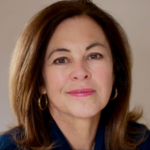The order, signed on October 3, calls for a review of “disparities in reimbursement between physicians and non-physician practitioners” allowing professionals to be paid “in accordance with the work performed rather than the clinician’s occupation.” By allowing NPs and PAs to work under what is known as full practice authority (FPA), Medicare will be in line with current practices at the Veterans Health Administration and Indian Health Services, two other federal health care programs.
The Department of Health and Human Services has up to one year to implement new regulations, but because of the anticipated impact, American Association of Nurse Practitioners’ CEO David Hebert expects changes much sooner than that.
“The executive order is really terrific because it’s going to save taxpayers money,” Hebert said. “It’s important because NPs are highly trained individuals who can do a lot and there are things that they can do now at the state level that the Medicare program does not permit them to do.”
A number of states have broadened scope of practice laws to allow NPs to be covered without physician supervision, Hebert says.
“It right sizes the Medicare program by allowing it to catch up to where the states had advanced, and it only benefits the consumer,” Hebert said.
New Rules Will Cut Costs
NPs and PAs are trained differently than physicians, and begin patient care earlier in their careers, Hebert says. Twenty-two states allow NPs and PAs to work under FPA, meaning they can practice without having to pay a physician for oversight. Supervision is a misnomer, Hebert says.
“People envision a physician looking over the shoulder of an NP working in the same office or having to get permission from a doctor to do something,” Hebert said. “Nothing could be further from the truth. NPs often work collaboratively with physicians. They share opinions but generally speaking, NPs have their own caseloads.”
Hebert says under Medicare’s current regulations, NPs may pay a physician as much as $1,000 a month to work in non-FPA states, making it cost prohibitive for them to work as independent providers with competitive rates.
“So-called supervision or mandatory collaboration agreements only drive up the cost of health care,” Hebert said.
Addressing Physician Shortage
Allowing NPs and PAs to practice at full scope could also address a growing shortage of primary care physicians. The Association of American Medical Colleges predicts the United States will be short as many as 55,300 primary care physicians by 2032.
“Residents are not choosing to go into primary care because it is not lucrative,” Hebert said. “In rural America, there may only be NPs in town.”
Health care providers should be regulated by the free market, not medical boards, Hebert says.
“Let consumers select a provider of their choice. Let’s open it up to have free and fair competition,” Hebert says. “Medical boards should not be regulating nursing.”
Jane Orient, M.D., Executive Director of the Association of American Physicians and Surgeons, says she has concerns about the push to replace physicians with non-physician providers.
“There is a reason for the rigorous training that physicians undergo,” Orient stated in an October 21 news release. “The work done by a minimally trained person is not the same as the work of a highly trained, experienced person even if the same code is assigned.”
AnneMarie Schieber ([email protected]) is managing editor of Health Care News.





